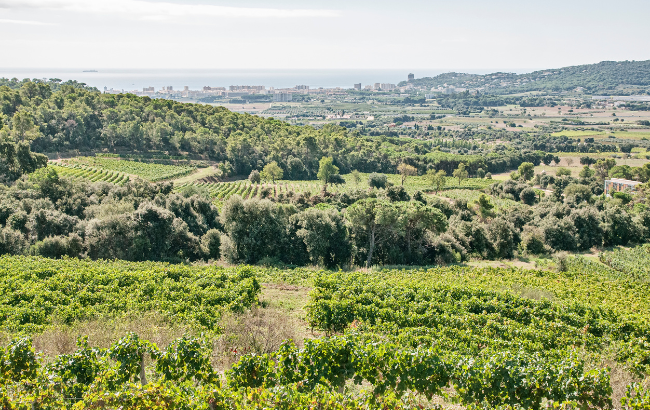Carlsberg unveils ‘world’s first’ paper beer bottle
By Phoebe FrenchDanish beer giant Carlsberg has unveiled designs for what it claims is the world’s first paper beer bottle made with sustainable and recyclable wood fibres.
The bottle forms part of Carlsberg’s Together Towards Zero initiative, which includes a commitment to reach zero carbon emissions and a 30% reduction in its “full-value-chain carbon footprint” by 2030.
The brewer has revealed two prototypes for its green fibre bottle. Both are made from sustainably sourced wood fibres and have an “inner barrier” allowing the bottle to hold beer. One uses a thin recycled PET polymer film barrier, while the other has a bio-based PEF polymer film barrier.
Carlsberg initially launched plans for the project back in 2015, working alongside EcoXpac, BillerudKorsnäs and post-doctoral researchers from the Technical University of Denmark. This collaboration has resulted in the creation of paper bottle company Paboco, a joint venture between BillerudKorsnäs and bottle manufacturing specialist ALPLA.
Companies also working with Paboco include Absolut, Coca-Cola and L’Oréal. Last year, Carlsberg invested in a number of other sustainable solutions, including recycled shrink film, greener label ink and Snap Pack, which replaces the plastic packaging around its six-pack cans.
Myriam Shingleton, vice president group development at Carlsberg Group, said: “We continue to innovate across all our packaging formats, and we are pleased with the progress we’ve made on the Green Fibre Bottle so far. While we are not completely there yet, the two prototypes are an important step towards realising our ultimate ambition of bringing this breakthrough to market. Innovation takes time and we will continue to collaborate with leading experts in order to overcome remaining technical challenges, just as we did with our plastic-reducing Snap Pack.”
“The work with our partners since 2015 on the Green Fibre Bottle illustrates that this kind of innovation can happen when we work together. We’re delighted that other like-minded companies have now joined us as part of Paboco’s paper bottle community. Partnerships such as these, ones that are united by a desire to create sustainable innovations, are the best way to bring about real change.”
It follows news that Scottish lager brand Tennent’s has invested £14.2 million in sustainable initiatives including scrapping plastic packaging, using green energy and implementing waste management practices.
From Spring 2020, cans of Tennent’s lager will be packaged in cardboard rather than plastic, with plastic rings and shrink-wrap phased out. This will result in 150 tonnes less plastic produced per year. Tennent’s has become the first brewer to join The UK Plastics Pact, which intends to ban single-use plastic used in packaging by 2021.
Partner Content
Carlsberg spent £20 million on a marketing campaign in the UK this year which admits its flagship beer is “probably not the best in the world”, at the same announcing the roll-out of a new, premium-positioned pilsner that will eventually replace the original lager beer.
Read more:
Why eco-friendly packaging could be the next big thing in craft beer





How we get some?
It’s great to see major brands investing in to research and creating environmentally sustainable packaging. There’s so much research highlighting that customers are willing to switch brands or pay more for environmentally sounds products.
I was really disappointed to see 3M releasing new plastic packaging (http://www.kameelvohra.com/customers-care-about-your-sustainable-efforts/) that’s not recyclable.
Hopefully Carlsberg or their subsidiary releases data about the biodegradability or recyclability of their new green fibre bottle when coated internally with a bio-based PEF polymer film.
Hello,
I would like to know if this bottle is recyclable.
If so, how do you separate the wood fibers from the PET and bio-based polymer film barriers ??
Best wishes
Hi All,
The high weight of glass is the problem. Geographically, glass bottle plants are often located extremely close to the product manufacturer. I absolutely agree that reusable containers are the most sustainable form of packaging, but this push is the result of minimal government involvement to promote reusable packaging. I understand Canada is extremely efficient at this process and a consumed bottle will be washed, returned to the manufacturer, and back on the shelf in 2 weeks or less. In the United States this was never economical when single use containers go unchecked by governing bodies.
Eugene Gassmann, you are incorrect thinking that pine tree fiber packaging is carbon negative! The truth is pine trees (primary source of paper fiber [today]) take 7 years to mature for harvesting. Pine trees DO scavenge CO2 BUT the paper production process produces far more CO2 than the trees used to make them can consume. Also, despite what paper manufacturers say, most of their trees are harvested from private land owners that plant/harvest pine trees. These private land owners use to replant, but are now selling this land given its recent increase in value for development.
HEMP! HEMP HEMP! HEMP, in my opinion, is the best alternative to pine tree paper. Hemp fibers are 4 to 5 times stronger than pine because they are longer fibers AND therefore last longer in the recycling stream. HEMP can be harvested multiple times a year and scavenges far more CO2 than pine trees. Unfortunately, the DEA classified hemp as a schedule 1 substance preventing the research/funding/legality needed to pursue hemp as an alternative paper source. At long last, the Hemp Farming Act of 2018 removed hemp from the DEA’s scheduling which FINALLY allows for research/funding.
Personally, I feel that a combination of reusable packaging and responsibly sourced materials is the answer.
Please let me know what you think!
Although a nice idea and marketing material, having the plastic polymer lining makes recycling extremely difficult making this a potential one use bottle. Not sure if this is better than glass? Obviously glass takes a lot of heat/energy to recycle but at least the whole thing can be recycled over and over.
Moreover, although glass takes a lot of heat/energy to recycle, but it can be provided from solar energy sources.
In practice, this would be like a beer version of the decades old milk carton, right? However, it’s obviously going to be engineered and shaped differently to ensure the beer doesn’t corrupt the ‘bottle’ and that it can contain the pressure. Stating the obvious here, flat beer won’t be nice to drink. I’d love to try beer in this new packaging.
good morning
Will this type of bottle be available on the market too as for hotels , mineral water , shampoos etc. ?
Thank you Claude Scheffer
Allright. So we dont want glass bottles, because there is carbon emission involved in making it. and now we are moving into paper bottles, where we’ll have to cut down trees??.
Anjith, trees have taken CO2 from the air. Using them, ideally NOT burning them (re-releasing the CO2) takes CO2 out of the cycle.
Paper companies re-plant the trees they cut down and typically own huge forest areas because it takes a long time. But responsible paper companies do this for generations now. They depend on re-growing their most important raw material.
Besides, those are made from recycled fibers, I.e. it is already a ‘cut down tree’ and the fibers are simple re-used again. That is a great way of not wasting them.
In large parts of the world, glass bottles are not recycled but are going to landfill. Besides, it is doubtful that the energy put into glass, its transportation to the filler, the transportation to the retailer, then to the consumer , and finally to the landfill of such a heavy material has a better ecological outcome then the much lighter fibers. It adds up.
Hmm, so this is a way to avoid recycling glass bottles if you wash them they can be used for years and then when they finally break can be melted down and turned into……glass again.
The bottle should be made with non woods ie plant fibre . We have been working with non woods ie crop waste /perennial grass fibres for years . These are not magical new fibres but there has always been concerns about consistency and quality of supply and until recently , no need to consider alternative to forestry . Part of our work has been to find ways to resolve the barriers to entry and it comes at the right time. Taking from the field as opposed to forest is a strong environmental, social, economic and problem solving opportunity. There could be unmitigated consequences but proper accreditation helps to resolve some. www.tensei.co.uk.